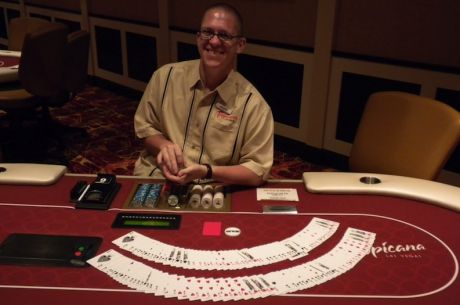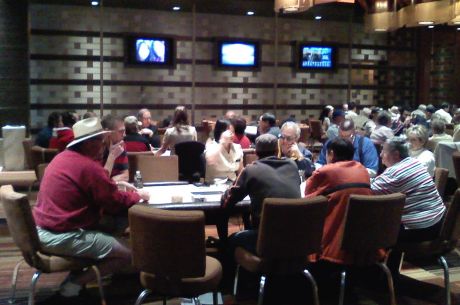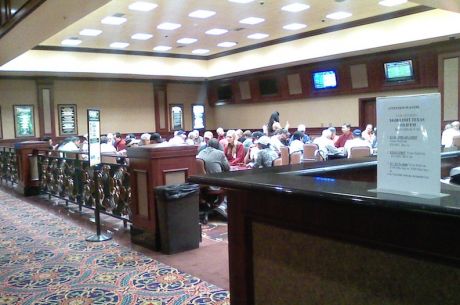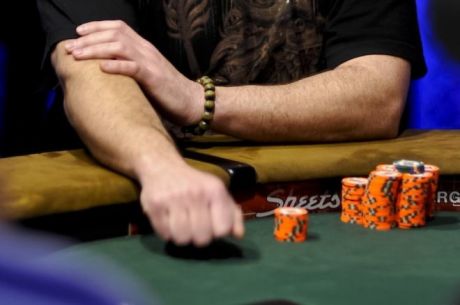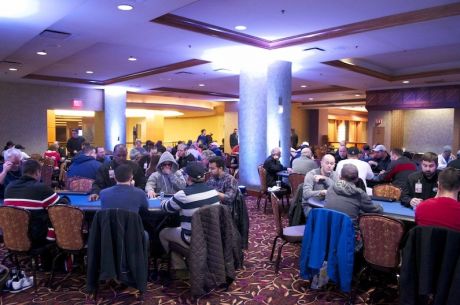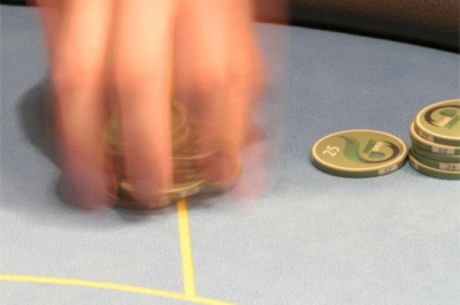Casino Poker for Beginners: All About Chips, Part 2 -- Betting and Raising
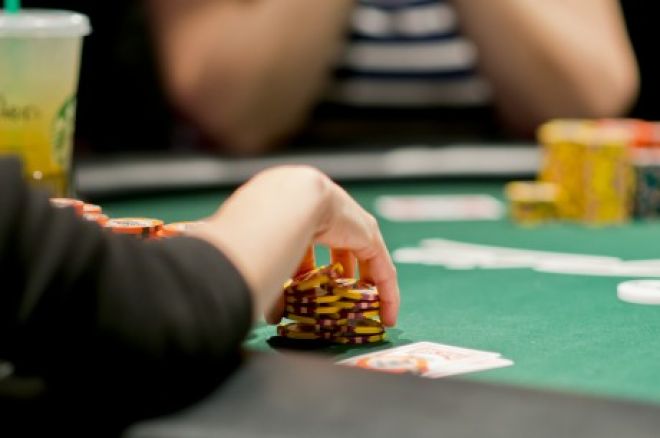
This article continues my three-part explanation of the rules and procedures surrounding poker chips in brick-and-mortar casinos. Today I want to discuss how to handle your chips when making bets and raises. All of the following points apply equally to tournaments and cash games.
Making bets
To make a bet, count out the needed or desired number of chips and put them neatly in front of you, several inches beyond your cards. Do not ��splash the pot,�� meaning tossing or dropping the chips. They tend to scatter in all directions, making it hard to tell how much you bet and wasting everybody��s time while they are gathered up again.
As soon as you release the chips, they belong to the pot, not to you. However, they are kept in front of you, separate from the pot and from the chips bet by other players, until the end of the round of betting. That way, if there is a raise after your turn, it��s clear how much you have already bet and, therefore, how much you will need to add to your bet in order to call the raise.
When putting chips forward for a bet (or raise or call), you can either leave them all in one stack, break them down into a few stacks for easier counting, or lay them down neatly in a row, which makes the number of chips visible to overhead cameras. There is no standard way of doing this. Some dealers will take a stack and break it down; others will take a row of chips laid down and rearrange them into a stack.
You will often see players grab a handful or large stack of chips, reach forward, and ��dribble�� one or two at a time until they have deposited the number they want. This is a bad habit that you should avoid, for several reasons.
First, a few casinos have a rule that any chips moved forward past your cards will all be counted as your bet or raise, whether or not you drop them on the felt. Second, you might accidentally drop more than you intended to. Third, this is much slower than counting out the right amount first, then moving them forward all at once. Fourth, other players might accuse you of trying to adjust the size of your bet or raise on the fly while watching their reactions, which is considered shady.
Betting lines
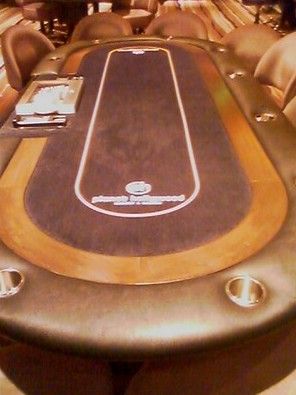
Some poker rooms have a ��betting line�� on the table, and only chips that are moved past this line are considered to have been bet. This is intended to eliminate the occasional ambiguity in determining whether a player moved chips sufficiently far forward to be deemed an intentional bet.
However, betting lines on the felt sometimes cause more problems than they solve, opening up opportunities for angle-shooters to try to trick you. If you��re playing in such a room, be alert for players who move chips forward to a point just short of the betting line in an attempt to manipulate you into responding, so that they can decide whether or not to actually make that bet, based on your reaction.
This is, of course, terribly unethical, but not all poker rooms will do anything about it, so protect your own interests by making sure that the others players�� actions are fully completed and clear before you take your turn. If in doubt as to whether another player��s chips have been validly bet or not, ask the dealer to clarify the situation for you. Do not be shy about this. It is both your right and responsibility to know where things stand before you take any action.
Making raises
You might think that making a raise would be so simple that it couldn��t get messed up. If so, you��d be wrong. In fact, the rules regarding the legal ways to make a raise trip up new players new more often than just about any other aspect of the game.
You need to understand these two basic principles:
- When it is your turn, a verbal indication of your intended action is as binding as the physical action itself.
- Other players have a right to be able to tell unambiguously when your turn is over, so that nobody inadvertently acts out of turn.
These principles work in tandem to produce three equally legitimate ways of making a raise.
First, without saying anything, you can simply slide forward, in one continuous motion, all of the chips constituting your bet, i.e., both the amount needed to call and the extra amount of your raise. Importantly, you cannot put out some chips, then go back to your stack, pick up more, and move them out, too. Such double motion would violate principle #2 above, because other players would not know whether you were done with your turn after the first bunch of chips was moved forward. For this reason, if you try to go back for more, the dealer will disallow it. This is called a ��string raise,�� and it is against the rules everywhere.
Second, you can announce the word ��raise�� with no amount specified. This commits you to at least a minimum raise, but not to any particular amount. You can then either move out the entire amount of your bet with one motion, as above, or you can first put out the number of chips needed to constitute a call, followed by a second motion with the amount of your raise. In this case, the verbal announcement before your first motion alerts the other players that more chips will be coming, so that you are not in violation of principle #2 above. However, your raising chips must be all in one motion, as in the first example.
Third, you can verbally announce both ��raise�� and the intended amount. For example, if the current bet is $10, you can say ��Raise to 25�� or ��Raise, make it 25.�� Saying just ��25�� technically has the same force. However, it��s better to start with the word ��raise,�� because poker players and dealers are tuned into that word, and hearing it has an alerting effect that a number alone does not have. Regardless of how you make the announcement, once you have done so, you are committed to that exact amount, and it therefore does not matter how you put the $25 in chips in front of you.
My next article will conclude the discussion of poker chips with a number of miscellaneous chip-related topics, including the ��oversize chip rule,�� handling chips and "chip tricks," making change, and even some talk about collecting chips.
Robert Woolley lives in Asheville, NC. He spent several years in Las Vegas and chronicled his life in poker on the ��Poker Grump�� blog.
Get all the latest PokerNews updates on your social media outlets. Follow us on Twitter and find us on both Facebook and Google+!

